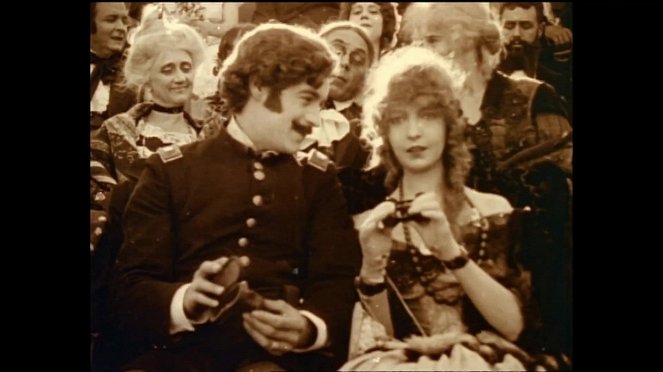Réalisation:
D.W. GriffithScénario:
D.W. GriffithPhotographie:
G.W. BitzerActeurs·trices:
Lillian Gish, Mae Marsh, Henry B. Walthall, Miriam Cooper, Mary Alden, Ralph Lewis, George Siegmann, Walter Long, Robert Harron, Wallace Reid (plus)Résumés(1)
Ce film retrace avec brio la formidable histoire de la naissance des Etats-Unis d'Amérique à travers la vie de deux familles pendant et après la guerre civile. Des scènes de batailles spectaculaires côtoient des séquences intimistes et poignantes notamment grâce au talent de Lillian Gish qui allait devenir l'une des actrices favorites de D. W. Griffith. (Bach Films)
(plus)Critiques (2)
The rightful king and forerunner of all narrative Hollywood tentpoles (never mind Gone with the Wind or Ben Hur), which in the span of 190 minutes both engagingly and unhesitatingly demonstrates and anticipates how classical narratives should and will guide and constantly hold the viewer's attention. In particular, the work with mise-en-scène and the cross-editing are perfect, and the final hour, when the story evenly builds up on three interconnected fronts, is a pure example of the director's ageless genius. It is undoubtedly the greatest and most inspiring work of the first twenty years of cinema, and as such it simply deserves a full rating.
()
There has been quite a lot written about how controversial this film is. Yes, it is racist. What will you do about it today? Nothing. You don't have to promote it. However, I would still like to draw attention to its cinematic qualities. The way the battles are depicted, executed, and of course, filmed is absolutely incredible. The camera is not just static here, it moves, which is quite a novelty. But that's not all. For its time, it is incredibly epic and just a few years after Méliès, we see exteriors and beautifully wide shots, as well as excellent close-up shots. Sometimes part of the camera is shaded to better focus on the scene. The shots are often edited in a way that adds to their dynamism. Clearly, it is not a montage-style editing, but it is brilliant for its time. The way the assassination of President Lincoln is captured is absolutely breathtaking, it will leave you breathless in the film's events. Griffith and his cameraman chose great camera angles that enhance the atmosphere even more. Moreover, those dynamic scenes with the camera on a carriage are truly impressive for its time. It may be racist, but it's still a cinematic gem.
()

